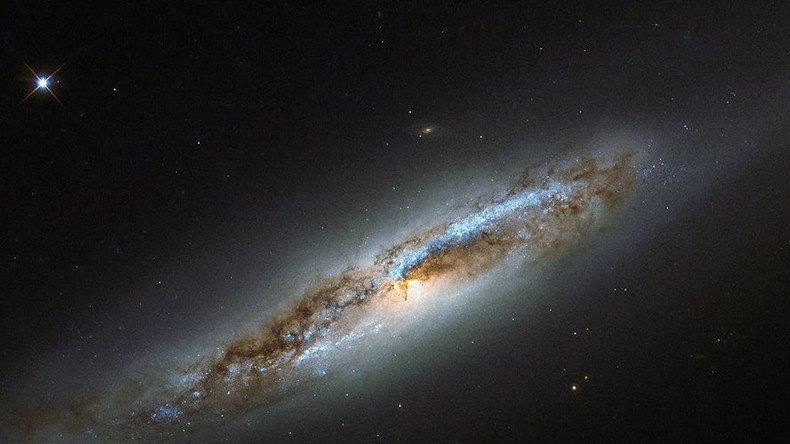Astronomers baffled by mysterious signals emanating from dwarf star

Astronomers on the hunt for habitable worlds beyond our solar system say they have picked up “strange signals” emanating from a nearby star, 11 light years away.
Scientists from the Arecibo Observatory in Puerto Rico are studying red dwarf stars in the hope that they might find planets orbiting them. On May 12, they observed mysterious radio signals emanating from a star called Ross 128.
Could these radio signals be signs of extraterrestrial life? Prof. Abel Méndez, planetary astrobiologist and director of the Planetary Habitability Laboratory at the University of Puerto Rico, doesn’t think it’s very likely.
“In case you are wondering, the recurrent aliens hypothesis is at the bottom of many other better explanations,” Méndez wrote in a recent blog post.
'We have five bodies': 'Alien' remains discovered near Nazca lines in #Peru - Ufologist (VIDEO, POLL) https://t.co/aGQ8F8znVtpic.twitter.com/9RxEOzq73b
— RT (@RT_com) July 14, 2017
However, the source of the strange signals still eludes the team. One theory about the source is solar flares – powerful outbursts of energy shooting out from the star's surface travelling at light speed.
A second theory is that the signals are actually coming from another object within the field of view of Ross 128. However, as Mendez says, “there are no[t] many nearby objects in the field of view of Ross 128,” further deepening the mystery.
The signals could also be coming from something far closer – a high orbit satellite which passed through the telescope's field of view, but which moved too quickly to be detected. However, this seems an unlikely source for the mysterious signals.
“We have never seen satellites emit bursts like that, which were common in our other star observations,” Mendez said of this theory.
‘Alien megastructure’ flashing as scientists still baffled https://t.co/XeJFIRaQj2pic.twitter.com/drVx2z0ecy
— RT (@RT_com) May 20, 2017
Whatever the signals are, they are “not local radio frequency interferences” and are “unique to Ross 128,” as similar observations of other stars did not show anything quite like it.
We are still trying to figure out the origin of strange signal we got from a nearby star 😕, but ... pic.twitter.com/qiz5004D6m
— Prof. Abel Méndez (@ProfAbelMendez) June 25, 2017
Dwarf stars have already been shown to have planets orbiting the habitable, or ‘goldilocks,’ zone, as is the case with the recently discovered TRAPPIST-1.
READ MORE: #7NamesFor7NewPlanets: NASA looks for help naming new discoveries, internet obliges
Mendez and his team will once again observe Ross 128 on Sunday, July 16. Until then, we’ll have to wait patiently just like Prof. Mendez.
We are ready to observe this weekend Barnard's Star and solve the mystery of #Ross128https://t.co/zATX7IDAu0@CienciaPR@UPRA_Oficialpic.twitter.com/x9TgwIHj9t
— Prof. Abel Méndez (@ProfAbelMendez) July 13, 2017
He’ll be having a drink to celebrate if and when results come in. “I have a Piña Colada ready to celebrate if the signals result to be astronomical in nature,” he said.












